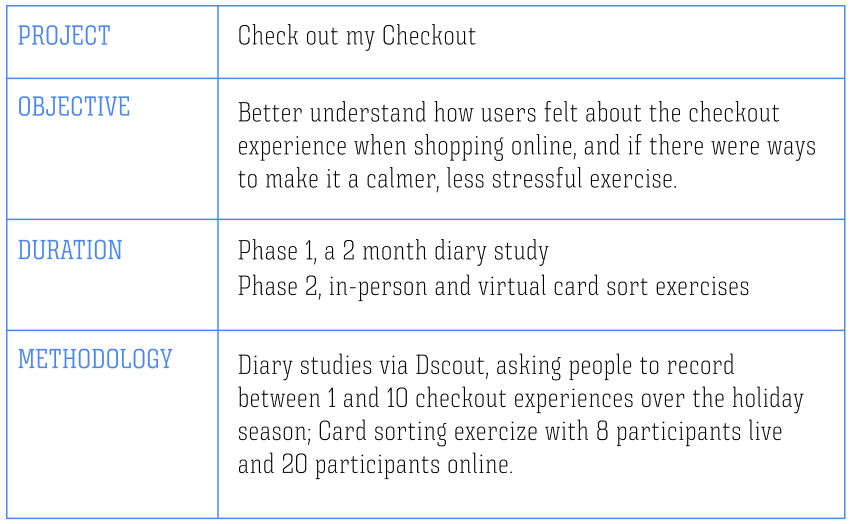August 11, 2024
.avif)

August 11, 2024
.avif)

Emma Craig isn’t one to shy away from a challenge. Craig, a Senior UX Researcher at Shopify, wanted to see if she could make the checkout experience—that dreaded phase of online shopping when consumers are asked to part with their money—a less stressful moment.
She began her investigation with a diary study using Dscout, asking shoppers to give feedback on the checkout experience. Using that feedback, she developed the second phase of the project, a card sort exercise which asked users to arrange the various elements of the checkout experience in the order they’d like to encounter them.

Emma Craig: Right now, one of the things that a lot of stores are doing is trying to make online checkout more personal for people, and ultimately quicker.
The idea behind the project was to see if there was a way to make that online checkout experience more calming for shoppers, to retain some of the fun of the retail experience. Or if ultimately, because it’s a financial transaction, it’s inevitable that there’s some amount of stress.
“The project started in December, which was holiday shopping season—it actually seemed like a perfect time to do a diary study and ask people about their shopping experiences, because people are doing a lot of online shopping during that time.”
So that was the first phase of the project, which was done with Dscout. I set it up pretty flexibly, so people could make anywhere from one to ten entries. What Phase 1 really told me was that there’s a wide array of buyer behavior. And it helped me hone in one the key elements that comprised the checkout experience and develop Phase 2, which is where I got most of my insight.
In Phase 2, I used an information architecture approach. I created a series of cards that represented the different facets of the checkout process—everything from product reviews to customer support information, how many of a certain item a store has left in stock, the store’s return policy, the amount of loyalty points you might have at a store, the option to have something gift wrapped, anticipated delivery date, fields to enter a discount code, etc.
The hope is that we can bring people into the lab, and have them go through a simple shopping exercise. We’d sit down with them afterwards and take them through the various moments when they had physiological responses, so we’re not distracting them during the testing by asking them questions or having them think out loud. It’s an exciting prospect and may be a way to get even more insight.